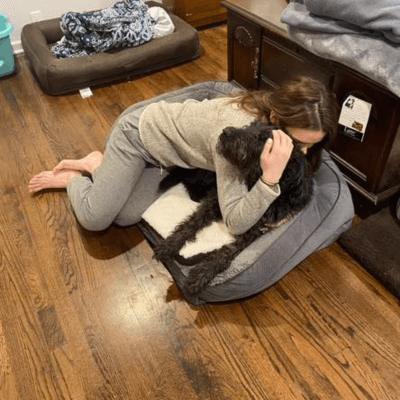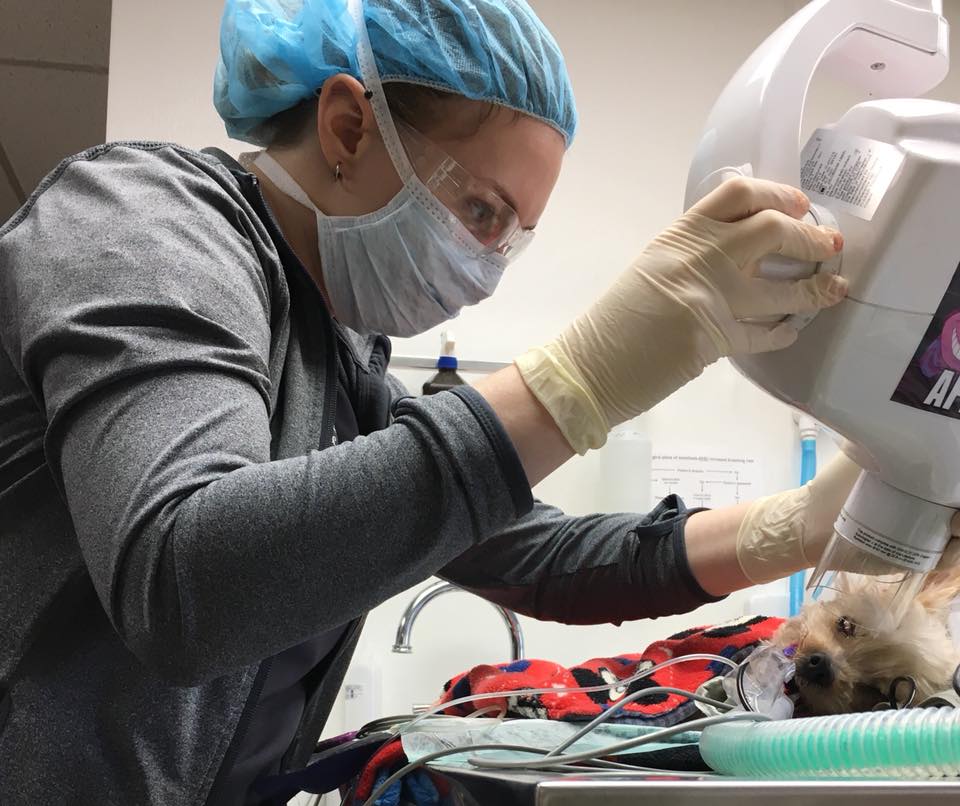A Clawful Dilemma
There are only a few behaviors that cause big rifts between cats and their owners. Scratching is one of those behaviors. We become frustrated when the cat damages our belongings or otherwise destroys our home!
The old way to address this was to have the cats declawed. That way they could still paw at things but not damage our furniture. In recent years, we have learned that declawing can cause a lot of problems for cats. The procedure is not a good solution to cat scratching. Science has shown that cats who are declawed are more likely to have issues using their litterbox, develop painful arthritis, become aggressive and to bite. For these reasons, many veterinary hospitals are no longer willing to declaw cats.
So, what are we as pet owners to do? We love our cats but we also love our homes!
Put Down the Spray Bottle!
Have you ever had a roommate who’s taste in décor was completely different that yours? You like bright colors, they like muted or neutral tones. You love overstuffed furniture, but they are more into a sleek modern look. How did you handle it? Did you yell at your roommate to get their stuff out of your home? Did you spray them with a squirt bottle for putting their chair in the living room? Of course not! In most cases we compromise so that everyone feels at home. This is what we need to do with our cats.
What’s So Great About Scratching Anyway?!
The first step really is to understand why cat’s scratch. Scratching is a normal cat behavior. It helps the cat to feel at home. Scratching is your cat’s way of putting out a welcome mat or using a favorite snuggly blanket. He combines his scent with yours in a way that creates a cozy family place. Scratching is also important for the cat’s health. It maintains their nails removing the dead outer husks and helps them to stretch or maintain the muscles of their feet and upper bodies. For many cats, scratching can also lower their stress levels by being able to provide a clear signal that this is THEIR space, as they are not always so interested in sharing it with others.
Follow the Clues

In addition to understanding why a cat needs to scratch, we also need to discover what, where, and how your cat likes to scratch. Only they can you create a successful compromise so he begins to scratch the things you want him to instead of your sofa, doorways or speakers. Be prepared to do a little detective work!
Which scratchers does your cat use the most? Is there a preferred location? If you have multiple cats do you see different cats scratching different spots?
Start by walking around your house and looking for signs of scratching – frayed fabric, damaged woodwork or cardboard that has been roughened next to your recycling bin are all clues.
Next look at the angle of things your cat is scratching. Does he scratch the top flat part of the sofa arm,or does he prefer the corners, legs or upright part? Does he scratch the wood trim near the floor, or does he prefer to stretch out and scratch when his body is as long as possible? These are all excellent clues for you!
Quick Tips
- If you see your cat is scratching at the top of the arm of the sofa, you might try getting a carpet square and setting it on the flat surface of the end table next to the sofa. Add a little cat nip and see if your cat starts to scratch at that.
- If you see that your cat is stretching out and scratching at the door frame to your bedroom, try adding a natural wood cat scratcher just outside or inside the bedroom door. Make sure it is stable enough and tall enough for him to be able to stretch out and lean against it.
- If you are having a hard time determining what or where your cat likes to scratch, create a cat scratcher cafeteria by making or purchasing several different types of scratchers to see what your cat prefers. Cat scratchers can be made of natural wood, carpet, sisal rope or rugs or cardboard. In my house the cats really seem to prefer the cardboard, which is great because I can make scratchers for them with left over boxes!
- Place scratchers in a variety of locations around the house. Make sure some are on the floor and flat, some are at a 45 degree angle and some are completely upright. Be sure that some a low to the ground and some are further up the wall. Add a little cat nip to encourage the cat to investigate them.
- For some cats, adding your scent to the scratcher by touching or wiping it with a piece of your clothing can encourage them to use it.
Summary
Research your cat’s scratching preferences, respond with alternatives, and be proud of yourself for doing exactly what your cat needs to be healthy and happy in your home. It truly makes me smile each time I see one of my cat’s scratching because I know they are rolling out the welcome mat and getting comfortable. It indicates that they truly feel like a member of our home!

 Dr. Lori Rockwell is a veterinarian and the owner of
Dr. Lori Rockwell is a veterinarian and the owner of 


